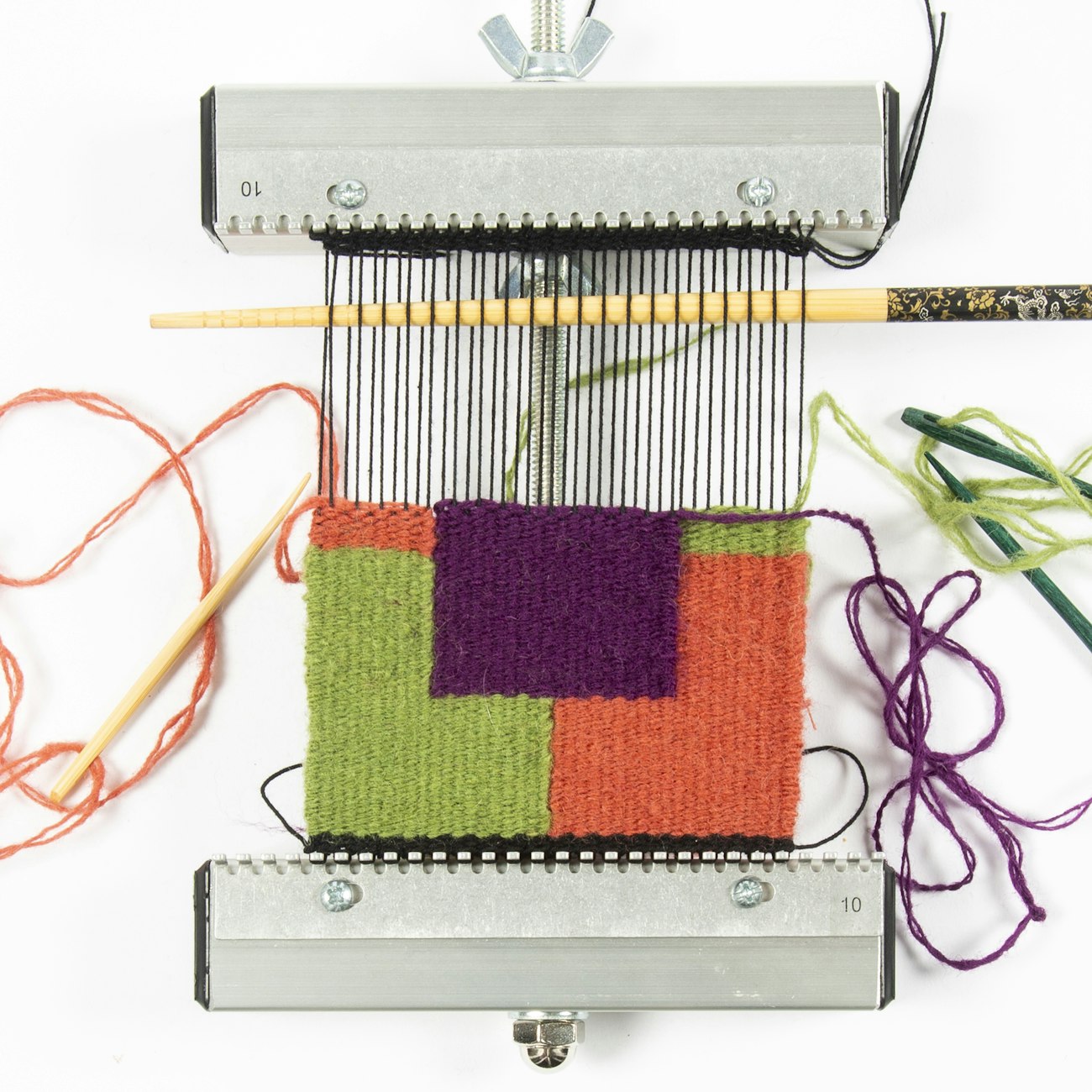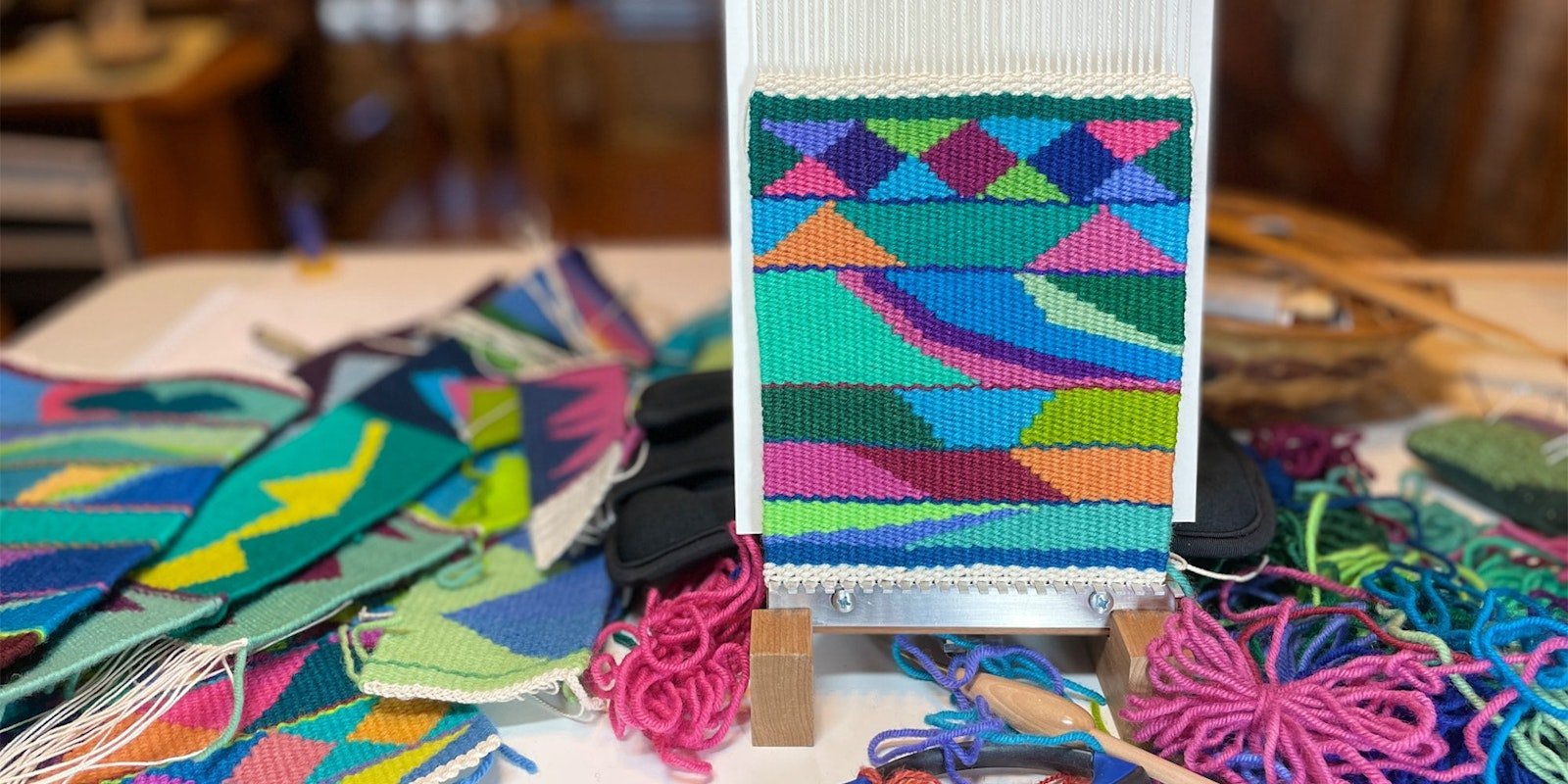Contents

When you start weaving tapestry, learning how to handle multiple wefts in a single shed can be a challenge. How do you keep your weft from tangling? What do you do when two wefts meet? How can you use the interaction of wefts to make shapes? These are all questions beginning tapestry weavers ask, and fortunately there are some simple answers.
Today’s Skill Guide will give you a solid foundation in the basics of tapestry and how to manage your tapestry wefts. As you read, you’ll learn:
- Meet-and-separate technique
- What to do when your wefts meet
- How to use these techniques to weave angles
- Tips, tricks, and techniques to help you in your tapestry journey
Every item we’ve selected for this guide is part of your All Access program and will help you get the most out of your subscription. Check out the Little Looms Library and our video course website for more learning opportunities.
Happy Weaving,
Christina
 The meet-and-separate technique is one of the most important techniques to master when you get started weaving tapestry. Photo by Williams\Prior Art+Design
The meet-and-separate technique is one of the most important techniques to master when you get started weaving tapestry. Photo by Williams\Prior Art+Design
Meet and Separate: The Bedrock of Tapestry
Adapted from “Tapestry Weaving: Weaving in Opposite Directions” by Elena Kawachi and Claudia Chase
Tapestry weaving is a quintessentially slow craft. Every pass must be thoughtful, each technique chosen carefully, and all colors well contemplated. Even learning to weave tapestry is a slow process. Over many years of teaching, we’ve learned to discourage students from taking on too much too soon. Your first tapestry will not be perfect. Your selvedges will not be straight. The word tapestry is often used as a metaphor for life, and it fits in so many ways: from the importance of unweaving when you’ve made a mistake to the need to hone your skills slowly and carefully.

